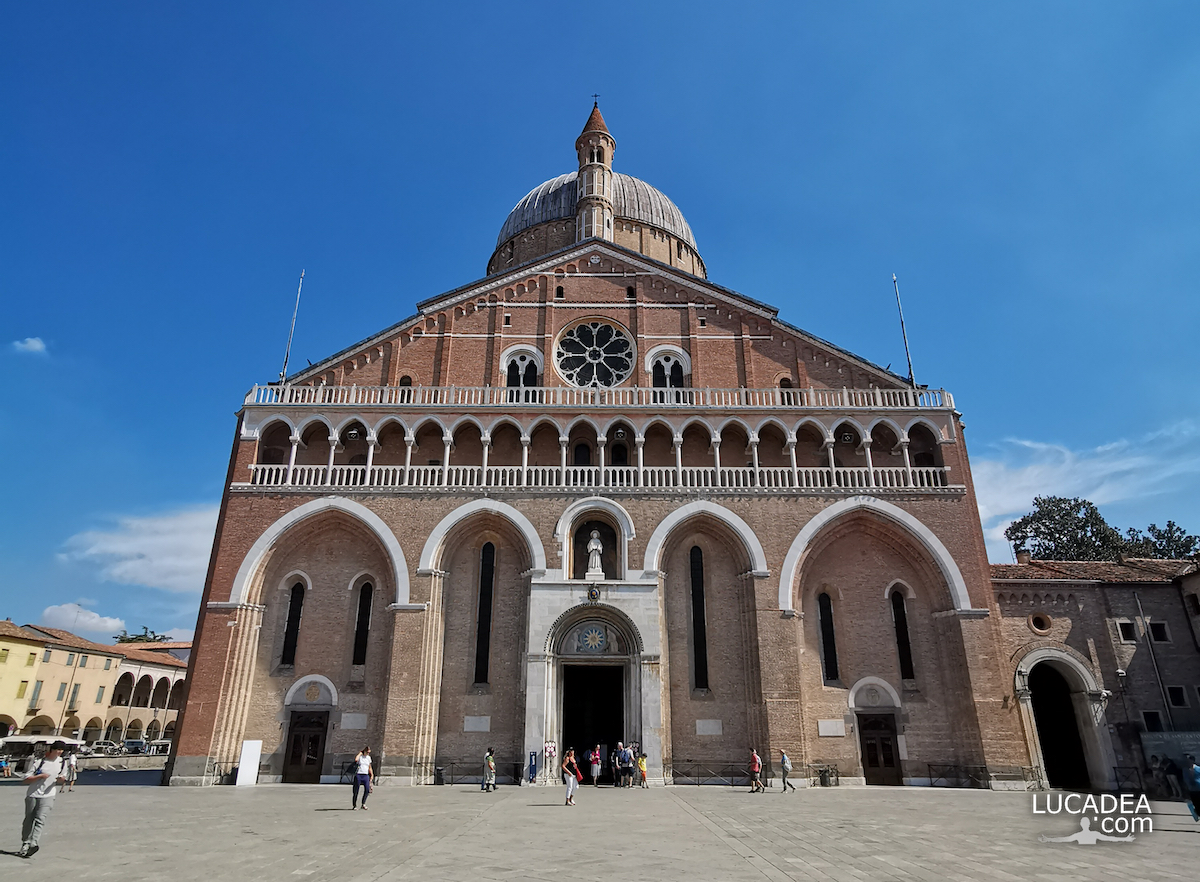The apse ceiling of Santa Maria sopra Minerva in Rome.
Santa Maria sopra Minerva is one of the most important churches in Rome and is located near the Pantheon, in the Pigna district. Built in the 13th century by the Dominican Friars, it is one of the rare examples of Gothic architecture in Rome, famous for its history, art and architecture.
The basilica stands on a site that was previously occupied by a pagan temple, initially attributed to the goddess Minerva, but which was actually dedicated to Isis. The name "sopra Minerva" derives from this ancient belief. The construction of the Gothic church began in 1280 and was completed at the beginning of the 14th century. Over the centuries, the church has undergone numerous modifications and restorations, while maintaining its Gothic character.
The interior of Santa Maria sopra Minerva is richly decorated and maintains its original Gothic structure. It has a three-nave plan with pointed arches and vaulted ceilings. The side aisles house several richly decorated chapels with important works of art.
The apse ceiling is particularly impressive, with a ribbed vault richly decorated with bright colors and intricate patterns. In the center of the apse is a large painting depicting religious scenes, which helps create a solemn and evocative atmosphere.
Other Elements of Interest are: the Funeral Monument of Saint Catherine of Siena (Saint Catherine of Siena is buried in the basilica, and her tomb is a place of great devotion) and Bernini's Elephant (in the square in front of the church there is an Egyptian obelisk supported by a statue of an elephant, designed by Gian Lorenzo Bernini; this monument is commonly known as the “Pulcino della Minerva”).
Santa Maria sopra Minerva is a place of great historical, artistic and religious importance, representing a unique example in the Roman architectural panorama for its Gothic style and the numerous works of art it houses.
Do you know the monuments of Rome? Add a comment or go to the bottom of the site to read what other visitors have written.
Photo taken with Canon EOS RP and lens Canon RF 24-50.
Here I leave you the official website of the basilica: santamariasopraminerva.it.
To see all the photos I took in Rome click here:

Here is where the basilica is located:
The Basilica of Santa Maria sopra Minerva (in Latin basilica Sanctæ Mariæ supra Minervam) is a minor basilica in Rome located in the Pigna district, in Piazza della Minerva, near the Pantheon. It is one of the very few examples of Gothic architecture in Rome. The basilica houses the remains of several important figures including Catherine of Siena, proclaimed a Doctor of the Church in 1970, the mystic painter Beato Angelico, proclaimed "Universal Patron of Artists" in 1984 and Pope Benedict XIII. Inside it preserves valuable works of art including frescoes by Melozzo da Forlì and Filippino Lippi.
Continue and learn more on Wikipedia
The apse ceiling of Santa Maria sopra Minerva in Rome – Le plafond de l’abside de Santa Maria sopra Minerva à Rome – El techo del ábside de Santa María sopra Minerva en Roma – O teto da abside de Santa Maria sopra Minerva em Roma – Die Apsisdecke von Santa Maria sopra Minerva in Rom – Trần nhà của Santa Maria sopra Minerva ở Rome
The text of the post was written with the help of ChatGPT, a language model from OpenAI.






